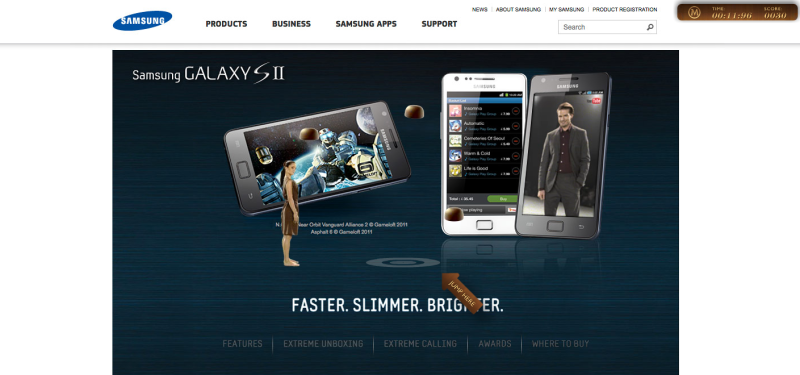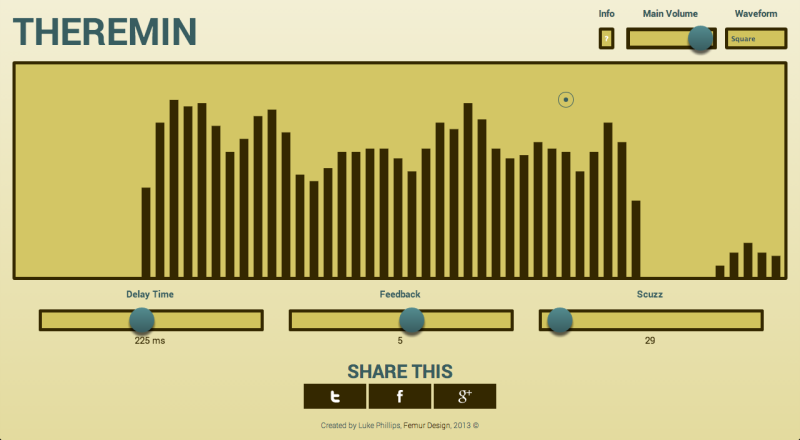The Digital Temptation
I was listening to an excellent podcast by Gus Guerrero with Nathan Cooper of RubbishCorp and much more, and started to think back to my master’s thesis. My hypothesis was; how does the shift into digimodernism radically alter society, further upsetting the balance between consumer and marketing, and what challenges does this shift present to marketing communications? A mouthful, in other words.
To save you a lot of theoretical blurb, I’ll skip to the end and talk about the conclusion, which I feel is just as relevant today (if not more so) as it was back then. If I’m honest, I think it will stay relevant for a very long time. Probably around the same time as TV will be around.
For the sake of clarity, digimodernism is the revised name of what used to be called pseudo-modernism, and is described as, "the cultural effects of new technologies. It's the impact of computerization on texts and the arts. It's a whole new cultural paradigm, the successor to postmodernism which bit the dust around the turn of the millennium."
My conclusion was (heavily edited here for the sake of brevity), "Thanks to technology, the ways in which consumers interact with, and in, society have changed dramatically. Technology brought about the democratisation of information, and forced organisations, companies and brands to be transparent in their marketing activities, and to acknowledge their loss of absolute control. Consumers are more aware, more able, and more switched on than ever before. They have become authors of their own text, able to pick and chose what they see and hear, as well as have a direct say in the outcome. As a result their role in the marketing mix has undergone a genuine revolution. The role of the consumer has shifted to a participative one, an engaging one, and an active one.
The same changes in technology that empowered consumers have allowed marketers to create far more innovative, fun, interactive and engaging adverts and campaigns than ever before. While this at first glance seems like a perfect match, what became apparent through the focus groups was that the effort and time required to watch/participate/decipher the message in these new campaigns was not consistent with the result/reward/pay-off. Furthermore, thanks to the complexity, or in some cases, the randomness and novelty of some campaigns (viral videos, stunts, etc.), the message and/or brand was completely lost.
Ultimately, as a result of this, the campaign might have been entertaining, but it served no other purpose - and that was if the viewer/participant was able to fully understand it.
Consumers do not have the time or patience to solve puzzles, spend half an hour clicking through videos and links, or to scan a code in order to access a piece of information they could have simply read. Technology may be integrated in society, but, simply put, just because we can, doesn’t mean we should.

In order to grab consumers’ attention, marketers and brands must engage yet respect them. It can be fun, it can be adutainment or prankvertising, but it should also be quick, relevant and honest. Consumers know an advert when they see one, and are no longer as condemning of them; this means that brands no longer have to hide; the message should be clear and be delivered promptly, allowing the consumer to interpret it, and move on."
To be even more brief; brands should stop faffing around with technology and just deliver what everyone knows they’re trying to deliver - the reason why we should spend our money on them.
At one point in the podcast, Nathan and Gus discuss prankvertising, and the like, and it was this that got me thinking back to my thesis. Nathan says that agencies are trying to break their way into our news feeds, our streams of information. They’re trying to be viral, and success is seen as how many people view the video, or click through to see that picture, but 10 million views on YouTube doesn’t mean your product is any good (Go Pro might be an exception here!*). With the money invested, agencies only have one shot, and it might as well be spent on a television ad that would be put directly in front of millions of people.
Advertising is becoming all about hits - the idea that these hits aren’t even in the country you’re in doesn’t seem to matter. Nathan uses the recent viral hit of Tui as an example (man’s house is plumbed with Tui beer). So far it has 3,188,637 views on YouTube (on Tui’s channel alone), but how many of those were from New Zealand (population 4.5 million) - the only country where the beer is available to buy? Why bother? Why would a business pay for something that doesn’t actually sell anything in the market in which they want to sell products?
He goes on to talk about how advertising, if it continues like this, will likely follow the path of TV programming - things will just become more extreme in order to get the attention and the hits they want, but where’s the good in that? It’s a lazy way to advertise.
And, as you might have guessed, I agree. Don’t get me wrong - I’m not suggesting agencies give up on viral types of advertising, it is, after all, all shits and giggles, but I can’t help but think their money could be better spent. The death toll of TV has been sounding for about 20 years now, and I’m not the only one who’s getting tired of it. TV, just like that crazy internet thing, is here to stay. Apparently the advertising trade has only just cottoned on to this, the silly buggers, despite the fact that the 2013 Nielsen Global Survey of Trust in Advertising (ha ha) lists TV ads as the 5th most trusted form, beaten by (from 1 to 4) personal recommendations, branded websites, consumer online reviews, and editorial content such as newspaper articles.
Online video ads, ads on social networks, mobile display ads, banner ads and text ads are all at the very bottom of the pile.
It all reminds me of this rather excellent open letter to advertising and marketing from 2011:
Dear All Of Advertising And Marketing.
My name is Brian. I’m what you would probably call a target demographic, or perhaps a consumer. In fact, I’m just a 27-year-old man with a nice wife (Sandra) and two children who I think the world of (except on Saturday morning when I could really do with a lie-in).
I work at a company that manufactures automotive parts. I’m a buyer. That’s not particularly interesting, but it pays the bills (and the lads are a good laugh). Since the economic downturn as they call it on the news (or the utter bollocking shitstorm, as it’s known at work) quite a few people have been laid off. But, there’s only me and another buyer here, so with a bit of luck I’ll be okay. The other day I saw one of my old workmates who is on the dole now, pretty depressing.
Anyway, apologies, I’m rambling. The reason for my letter is this. I was watching the telly earlier today, when on came an advert. It was (I think) selling sausages. It turns out that they wanted me to go onto the internet after watching their advert, and instead of looking at pornography, go to their microsite (which is kind of like a website that nobody goes to), and then put up a video. A video that I would make.
Now I don’t know about you, but pretty much all I’m looking for form the maker of sausages is some really tasty sausages. That is all. I’m not saying that’s easy – I couldn’t make nice sausages. But that’s what I’d like.
I don’t know if there’s been some terrible misunderstanding, where you got the idea that I’d really like the prospect of coming home from work and spending my valuable free time taking part in your stupid idea about sausages, or tea, or washing bloody powder, or pretty much anything else for that matter. But here’s the thing. I don’t. I don’t want to make a film, or draw a picture, or nominate a friend. Or compose a soundtrack or re-edit your advert. Really, I don’t.
If you’d like to tell me what’s good about your product, fine. I may buy it. I may not. I know that might sound boring, and I know it must be very tempting to sit in your nice, comfy offices and dream up schemes where normal people like me forget our everyday cares and participate in your marketing. But, to put a not-too-fine-a-point on it, please, please, PLEASE, if you wouldn’t mind, awfully. Leave me alone. Thanks.
Yours truly,
Brian
What a good read. But did anyone listen? No, probably not.
There are two things I want from advertising. One - make simple ads. I don’t think TV ads are the be all and end all of advertising, but if you’ve only got X to spend, why not do it in a way that will hit your target market, in a way that people trust?
Two - cut the bullshit. Just lay it on the line. Why should I buy your X over their X? Don’t make me play an online game hidden in a YouTube ad, that can only be found by typing X, Y, Y, Z, L, R and then hitting ‘up’. Why on earth would I go through all that trouble when I don’t even know if I like you yet, and if I did like you already, why would I do it?
This isn’t a groundbreaking post, and I certainly don’t expect anyone to really listen, but I know with absolute certainty, that I’m not alone. It’s time we got over the high of the internet, and started to think about the simple things; why should people buy your product?
P.S. One of my favourite comments on the open letter is here, and is in response to someone (‘Advertising’) saying that because Brian is 27, he is out of the target audience for these sorts of things. The response reads, "Um, Dear Advertising. Trust me when I say this… You’re wrong. I work in the industry, and have had to make 100 of these shitty microsites. I’ve seen the analytics. They’re not on your side.
In fact, the only reason these microsites exist is so that some clueless product or brand manager can masturbate to the *idea* of Brian just LOVING YOUR BRAND OMG SO MUCH HE MAKES TEH VIDEOS!!!#111
Truth is, Brian came to your site, and was considered a “bounce.” He left immediately, and so did the 20 year olds, the 15 year olds, and the 40 year olds. Because he was hoping to find dietary information on your sausage, or maybe if it was Fred Meyers or Safeway that sold them. Turns out, he DOES make videos, they’re of, and for, his friends. Not his sausage."
SNAP! As the kids say.
P.P.S. This isn't about branding. That's another story all together.
*And I’m absolutely sure there are other exceptions.


